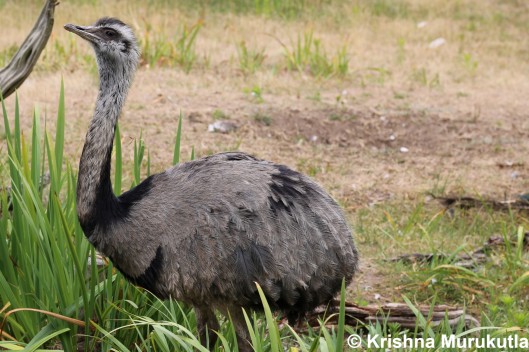
Greater Rheas are flightless birds ,are a member of the Ratite family are native to South America and Argentina, the greater or American rhea and the lesser or Darwin’s Rhea and can withstand cold temperatures better than their African cousins.Rheas are polygamous, with males courting between two to twelve females. He alone incubates from ten to fifteen eggs. All eggs hatch synchronously within a 24-48 hour period. He alone cares for the striped young, jealously guarding them against all comers for the next six months. The females meanwhile may move on and mate with other males.
Rheas are omnivorous, preferring broad-leafed plants, but also eating seeds, roots, fruit, insects, and small vertebrates. Rheas have only three toes; this is probably an adaptation to allow them to run faster than if they had four like most other birds. They have a spur at its heel that looks like a smaller version of the horn on a cow. Rheas are very tall, about 5ft on average
The rheas are a South American cousin of the ostrich. Rheas are native to South America from the Pampas of Argentina. They are members of the ratite family of flightless birds, which include Ostriches from Africa, Emus and Cassowaries from Australia and Kiwis from New Zealand . They may live up to 20 years. Grow to between 4ft 6ns and 6 ft.Weigh from 25-50 Kgs. They are very inquisitive. Mature at 2 years. Lay 30 or more eggs in the spring. Incubate for 38 days. Males incubate the eggs and rears the chicks. Are very hardy in all weather conditions.
